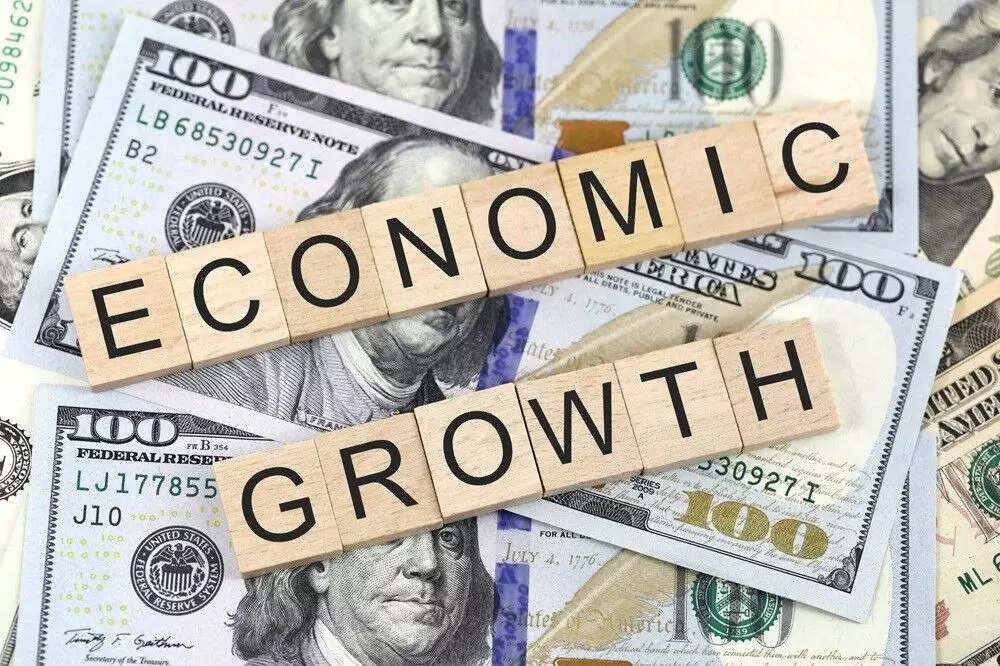How Does an Economy Grow and Why Does It Crash?

Growth in the economy indicates that the economy can now create more. A country's actual GDP may have increased when it was producing more than it might have, but that is not considered economic growth.
In a similar vein, while real GDP may rise in an economy emerging from a recession, this does not equate to economic expansion. It can be calculated in real terms (adjusted to account for inflation) or nominal terms. Although alternative metrics are occasionally employed, gross national product (GNP) or gross domestic product (GDP) is the traditional measure of aggregate economic growth.
Sources Of The Expansion Of The Economy
Production capacity increases are the basis of economic growth. Economic growth, then, is anything that raises that capability.
Producing Capacity Is Dependent Upon:
When all other factors are equal, an economy with higher physical capital can generate more than one with lower physical capital. This is known as the stock of capital per worker. More capital investment results in greater economic growth because savings and investments increase the stock of capital.
The Quantity And Caliber Of Labor:
Greater labor produces more output so long as the capital per worker does not fall. For instance, four waffle makers out of ten will produce fewer waffles than four waffle makers. Additionally, increases in human capital—such as in health and education—raise worker productivity.
One crucial component of production is the technological level at which labor, capital, and natural resources can be combined to create a product. Productivity rises as technology advances.
Economic Growth Can Be Impacted By Government Policies
A significant factor in promoting (or inhibiting) economic growth is government policy.
Here are a few instances of economic strategies that support economic expansion:
Investing in Infrastructure: Infrastructure is tangible capital that is accessible to anyone, much like roads and bridges.
Governments increase a nation's capital stock by funding infrastructure. However, infrastructure loses value just like any other type of capital. In order to sustain infrastructure, governments must replace it when it depreciates.
Policies Influencing Labor Force Participation And Productivity
More economic growth may result from policies that promote a higher labor force participation rate, such as tax incentives for labor force participation.
Policies that support the development of capital and technology. Policies that promote savings and, consequently, capital investment, boost economic growth. In a similar vein, measures that promote technological advancement, such tax breaks for R&D, also boost economic expansion.
Understanding The Concept Of Crash Of Economy
History has seen multiple economic recessions including the dear lottery that have impacted people's and businesses' finances on a societal level. Around the world, governments of all stripes typically take action to prevent economic downturns, albeit they are not always effective. Recessions have occurred numerous times in the past, so why is there always a chance that they may occur again? Why do they occur? What impact do they have?
Like a wave in the water, the economy experiences highs and lows in cycles. As it grows, its crest reaches a peak, lowers, and then begins to rise again. An increase in the economy is referred to as "economic growth," and a decrease in the economy is known as "economic contraction" (or "downturn").
Policies Affecting Economy And Labor Force Participation
Policies that encourage a higher labor force participation rate, including tax incentives for participation, may lead to greater economic growth. Economic growth is enhanced by policies that encourage saving and, by extension, capital investment. In a similar spirit, policies that encourage technological development, including tax benefits for research and development, also support economic growth.
Oversupply: Businesses typically boost output during economic booms in order to keep up with demand from customers. A recession may result from an overabundance of unsold goods and services, which causes businesses to reduce output and lay off employees when consumer spending shrinks and demand peaks and begins to decline. Shillong teer can be used to make extra income.
Doubt: Making decisions for businesses is riskier when one does not know how the economy will change. Two events that can cause consumer trends to become unexpected over the short, medium, and long terms are pandemics and wars, which can lead to economic uncertainty. Economic activity decreases as a result of firms and individuals delaying purchases and investment decisions.
Conjecture: Economic bubbles typically occur when a product's price spikes unexpectedly as a result of market trends, speculation, or consumer confidence. Investors purchase it in the hopes of profiting from the price growth. But as soon as they start selling it off, the bubble bursts since there are less new buyers than there are supplies, which drives down prices. This was the case in the 17th century with tulips and the 2008 property market.
Longer economic recessions are more difficult to exit, as evidenced by less investment, lower consumption, fewer products and services produced, and higher unemployment rates. Additionally, it increases the likelihood of the next downturn in the economy, which is an economic depression.
Development Isn't Everything
Apart from the limitations in its examination of economic growth, the 1997 Index of Economic Freedom has a limited perspective on affluence, which is incompatible with democratic governance in the long run. The Index states that "How can my country achieve higher, sustainable economic growth?" should be the primary concern of everyone worried about their financial future.
Is it really that easy, though? Economic security has replaced economic growth as the public priority in almost all industrialized nations as wages have increased over the 20th century. In wealthy nations, the majority of the increases in government spending have gone toward retirement, unemployment, health, and work-related accident insurance.
Not everyone is above average, and integrating low-skilled workers into a high-wage economy will become more challenging. It is far from certain that these issues can be resolved by the market's magic. The majority of countries, affluent or poor, face fundamental economic decisions that require a more comprehensive framework of study.

















